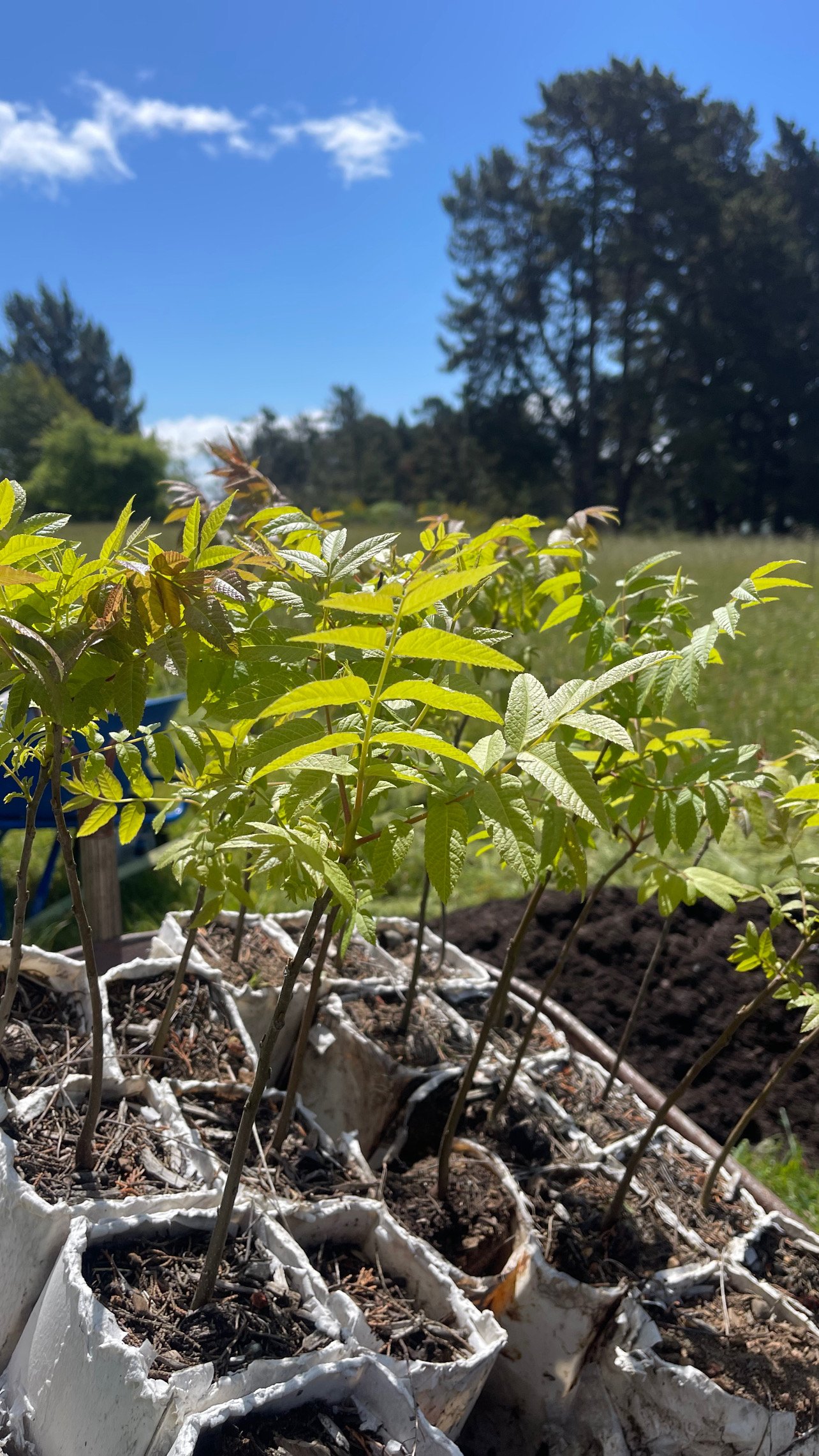Preparing the Paradox Orchard












Planting a tree sounds so simple. But, there are so many logistics to consider. In the case of the Paradox Orchard, the physical work began years before reaching for a shovel. Four rainwater tanks were connected to the roof of our barn to harvest 20,000 gallons of rainwater annually. But, that water needs to travel 200 feet to reach the orchard. So, a pump, pressure tank, spigots, and piping were installed to provide much needed water to the young trees.
Next, we stretched twine and over 300 feet of tape measure to create a grid, marking the trees at a predetermined spacing of 25 feet and driving stakes into the ground to visualize the spacing. After laying out the grid, it became apparent. that three declining mature pines that surrounded the southwest perimeter were damaged from the previous years storms and were likely to shade parts of the orchard, stunting the trees growth. The painful decision to remove the 35 year old Pines was made, and all of the wood chips were used to lay paths from the barn to the orchard.
Then there was the deer dilemma. While I love the deer, they have a habit of destroying young trees by eating their tender leaves and rubbing their antlers on the birth bark, both of which can result in the death or severe stunting of the tree. To remedy this, over 1,800 feet of 78 inch tall deer fencing was constructed around the perimeter of the property along with a taller entry gate. One day I hope to remove sections of the gate to create a path for wildlife to graze, but for now, only bobcats, birs, and jackrabbits can fly over or jump through the fencing.
Once the soil had hardened in mid summer, each location was hoed, amended with organic compost and natural fertilizers, and then covered with rice straw to retain moisture. As the seedlings emerge, they are carefully planted by hand in gopher baskets to ensure their roots are protected.








